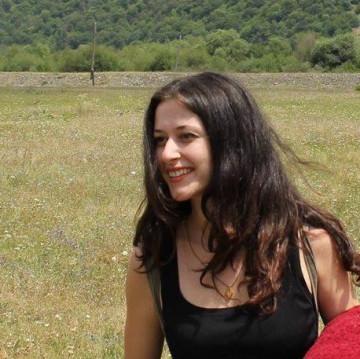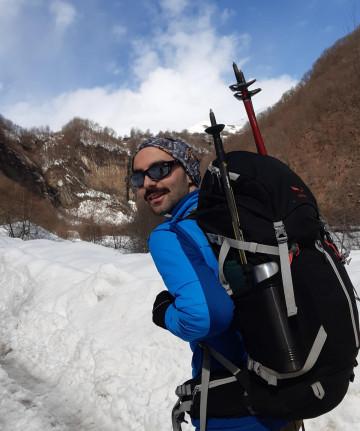
Park Hotel Surami Chalet
If you are looking for a place for a healthy vacation near Tbilisi, you should definitely come to Su...
Kozifa Monastery also known as the Gugomi complex is located in the Shida Kartli region, in Dzama ravine, Kareli municipality, in the village of Tkemlovana, on a mountain 3 km high from the village, in the middle forest, at 1420 meters above sea level.
The monastery complex includes the following buildings: five churches, a fence, a crypt, and various buildings. The temples are closely spaced and form a single complex. All temples have been restored today and services are being held in all temples.
The Convent of the Fathers of Kozifa is under the jurisdiction of the Diocese of Ruisi-Urbnisi. The Fathers' Monastery is currently operating.
The monastery complex of Kozifa was founded in the VII-IX centuries, named after St. George Kozifeli monastery near Jerusalem.
The complex includes 5 churches, monastic life dates back to the VI-VII centuries. The churches are built at different times but are closely attached to each other and form a single complex. The largest of the temples is the Church of the Assumption of the Virgin Mary. Here, also is St. Shio Mgvimeli, righteous Lazarus, of all Georgian saints and St. George Churches. Under the temple of the Righteous Lazarus Resurrection deep in the ground is a crypt where many sacred parts rest.
Construction with stylistic features began in the VIII-IX centuries. Particularly intensive construction on the Gugomi complex took place in the 13th century. This is confirmed by the stylistic analysis of the main buildings (Church of the Mother of God, fence) and the inscription on the arch of the "outer gate" of the fence, which speaks of the construction and decoration of the main temple of the complex (the inscription is currently kept in the S.Janashia Georgian State Museum).
According to the description of Dimitri Meghvinetukhutsesishvili (XIX century), Iason Tsitsishvili (XIX century), and Sergi Makalatia (XX century), the monastery complex was surrounded by a large fence, inside there were monks' stalls and small rooms. According to them, there were water outlet pipes inside the fence. Large pitchers of wine were also hidden here. All of this suggests that monastic life flourished here for centuries.
Presumably, construction was completed in the XV-XVI centuries. It is known that the life of the monks here lasted until the XVII century. Unfortunately, in this period the monastery ceased to exist during the invasion of enemies. Vakhushti Bagrationi, a famous Georgian historian of the XVIII century, mentions in the geographical description of the Dzama ravine: "Below Gujareti there is a monastery Kozifa, domed, well-built, inside the mountain and here void".
In 1997, Job, Metropolitan of Ruisi-Urbnisi, rebuilt the monastery.
All five churches in the Kozifa monastery complex have halls.
The first church (5,1X 3 m) stands in the south-western part of the complex, built of rough-hewn stone. Stylistic signs date back to the VII-IX centuries. The entrance is from the south. The conch of the rectangular altar was erected on the trumpets. One window is cut on the axis of the altar, and the other (arched) on the south wall. The interior was plastered. The white limestone cornice on the facades (the only fragment surviving in the north-east corner) consisted of a series of simple sloping arches.
The second church (6,7X3,4 m) stands in the south-eastern part of the complex, along with the first church. Stylistic signs date back to the VII-IX centuries. The church is built of roughly sloping stone (one large stone is built in the lower part of the north wall of the interior - (2,5X1,5 m).) The architectural entrance is to the west. The only window is cut on the axis of the rectangular altar. The building is low and dark, the interior is undivided. The sanctuary does not have a conch and a triumphal arch, which is why a semicircular arch encloses the entire length of the building. On the facade, the cornice is lined with deep arched slopes (the only surviving fragment in the north-east corner of the church).
The third Church - The Church of the Assumption is the main building of the complex with north and south outbuildings. Stylistic features date back to the XIII century. The church (17.85X7.85 m) is built of well-worked basalt blocks and cut stone. The structural parts are made of cut stone. The proportions of the building are light and upright. Only the western entrances are preserved. It is covered with architecture on the outside and arched on the inside. To the east is a semicircular apse. The wall of the altar has a one-step seat. On the sides of the east window, at a height of 1.5 meters, there are small rectangular niches, and below is a flat stone, the front face of which is semicircularly excavated. In the center of the altar stands a massive, expansive stone altar. In front of the altar stands a contemporary iconostasis of the church. The iconostasis tiles are carved (two tiles are kept in the Georgian State Museum). There is one window on the west, two on the south.
The interior space is narrow and high. The longitudinal walls and chamber are divided into four parts by two-tiered pilasters and pedestal arches. In the north wall, between the two pilasters, a wide (2.22 m) and high (up to the heel of the arch) arch is cut, which runs into the north annex (a similar arch was probably to the south as well.) The painting belongs to the XIII century. Its individual fragments have survived. The color of the painting is clear - blue, light green, white, gold, reddish-brick predominate. Flexible lines, reflective faces, light linear processing of colored surfaces indicate a high professional level of performance.
Of the facades, only the shirt and decoration of the eastern facade has remained. The wall is built of well-crafted burgundy blocks. All elements of the richly ornamented facade decor are bound in the center of the facade, on the axis of the window. The decorative system includes a circular profiled, ornamented cornice.
To the south of the church were gates and single-story buildings on its sides. These outbuildings filled the space between the three (first, second, and third) churches. The north annex was divided into three sections; The eastern section had an apse and its eastern facade was paved with hewn stone. Access to the building was possible only from the Church of the Virgin.
The fourth church was built in the late feudal era, with stylistic features dating to the XV-XVI centuries. It covers the entire western facade of the Church of the Assumption. The building is relatively well guarded; The church (8,6X5,75 m) is built of roughly processed basalt stone. It is an independent chapel. The entrance is in the center of the west wall. There are small windows at the top of the door and in the eastern section of the south wall. The east wall of the fourth church is attached (rebuilt) to the west entrance of the Church of the Assumption. In the irregular semicircular apse, there are two small rectangular niches, and from its center, slightly to the north, a stone trapezoid is built into the wall. The chamber is semicircular and rests on an arch resting on one-step pilasters. The interior space is wide and low.
The facades are built of relatively well-worked stone. The strong facade on the west facade is completed by a simply shaped shelf, a shaft, and a carved stone cornice composed of lightly excavated circles. The building is covered with well-smoothed lorries. Each groove, shaft, or groove of lorfin is considered ornamental jewelry.
The church has two contemporaneous additions to the main building to the north. The first is directly attached to the wall of the church with a carved stone arch. It is relatively large and auxiliary storage. The chamber has a semicircle. With a large arched exit cut into the west wall, this storeroom was connected to the second annex (only the contours are distinguished).
The fifth church is embedded in the corner created between the fourth and the first churches. It may be contemporaneous with the fourth church (XV-XVI centuries). The western wall is well preserved and the painting of the semicircular apse is also distinguished. The church (9,4X5,2 m) is built of rough stone. The east wall is directly adjacent to the fourth church. Decorative arches were placed between the pilasters on this wall. The church had an entrance on the south and a window on the west.
The fence for the complex was laid around in the last decades of the 13th century. It is built of crushed stone. The wide entrance to the east or the "outer gate" had an arch with an Asomtavruli inscription (the inscription is kept in the Georgian State Museum). The inscription is missing the beginning and the ending parts and is difficult to read, but with the surviving fragments it can be assumed - it talks about the construction and decoration of the main temple of the complex.
Our guides are ready to help you on this trip



Buy our tours online and explore incredible Georgia!


If you are looking for a place for a healthy vacation near Tbilisi, you should definitely come to Su...
Help other travelers use your experience.
Review this destination, share your thoughts, impressions, pros and cons.
Let's make traveling easier than ever.
Please login to ask a question
Ask a Questionგამარჯობათ, გზა როგორ მიდის შეგიძლიათ მითხრათ, პრიუსით შევძლებთ მისვლას?
გამარჯობათ, ძამას ხობის რუკა მაინტერესებს, მონასტრების ნახბვა, როგორც მითხრეს ისეთი რუკები გქონდათ ჩანდა ყველა მონასტერ, მე ასეთი აქ ვერაფერი ვერ ვნახე? მინდა ზუსტად ვნახო რისი ნახვა შეიძლება და შემდეგ დავგეგმოთ
გამარჯობა, ვებსაიტს ჰქონდა ხარვეზი და არ ჩანდა რუკაზე ადგილები. ხარვეზი გამოსწორებულია და შეგიძლიათ იხილოთ ამავე გვერდზე რუკაზე ქოზიფას მამათა მონასტერთან ახლოს მდებარე მონასტრები.